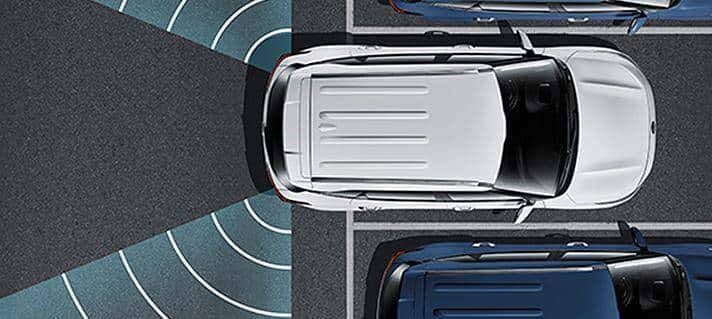When shopping for a new car these days, you may be startled by the number of options available. In the automobile industry, technology has advanced to the point that it has fundamentally altered the way cars operate.
While some of the features, such as automatic start and heated seats throughout the vehicle, are luxury and desirable, other options make driving safer. Every day, numerous accidents occur as a result of a few seconds of inattentive driving or simply human error.
Even after minor but costly incidents, people frequently lament, “If only I had been paying more attention….”When you should always be alert while driving, these safety features can help ensure that an accident does not occur.
Autonomous Emergency Braking
Some automobiles have had Anti-lock Braking Systems, or ABS, since the mid-1980s, which allows the vehicle to be safely handled while braking forcefully. ABS has been required on all new automobiles manufactured in the United States since 2000. The only drawback of ABS is that it still relies on you, the driver, to physically apply the brakes.
Autonomous Emergency Braking, or AEB, is the most recent breakthrough in braking technology. This technology, also known as Automatic Emergency Braking or Auto Emergency Braking, employs the same radar systems as your cruise control to determine the distance between you and the car ahead of you. Because the system is computer-controlled, it can react faster than you, putting the brakes on before you can react to a scenario. When paired with ABS, you now have instantaneous maximum stopping power.
While AEB is not yet required on all vehicles, some automakers are making it a standard feature on their most recent models.
Backup Camera
This isn’t a brand-new feature, but it can be quite useful to drivers. Many accidents occur at low speeds, such as when parking. A 360-degree camera system consists of cameras on all sides of a vehicle, sensors, and an inside display.
It allows drivers to see what’s behind them, which is very useful when backing up. Most systems beep to inform the driver if the car approaches too close to an obstacle, allowing the driver time to break. Because this technology has been available for a while, it is relatively affordable to include when buying a car and is really useful.
Auto- Steering
Auto-steering is now available in some vehicles. No, this does not imply that your car will drive itself, but it may take the steering wheel away from the driver in certain scenarios to avoid a crash.
It will apply the brakes and steer around a potential pedestrian or item in its path while remaining in the current traffic lane. Many auto-steering systems are designed to work in tandem with an automatic emergency braking system.
Led Highlights
When driving at night, good headlights are essential for avoiding car accidents. LED headlights are brighter and last significantly longer than regular halogen bulbs, up to 20 years in some cases. LED lights are more efficient, in addition to lighting up the street in front of you so you can see. In comparison to halogen lights, which waste 80 percent of their energy, they transform 80 percent of the energy they use directly into the light, losing only 20%.
LED headlights produce a higher quality of light than conventional headlights. They give clear, enlightening light while reducing the risk of other vehicles being blinded.
LED headlights have another advantage: they use less energy from your automobile to generate a higher-quality light, which increases fuel efficiency.
Lane Departure Warning/Lane-Keeping System
Lane departure warning is intended to keep drivers from becoming distracted while driving. Even a glance down at the radio or the passenger can cause you to become distracted long enough to shift the automobile.
A lane departure warning system uses cameras to identify whether or not a vehicle has drifted across a lane. If your automobile shifts too far, it will notify you with an auditory, vibration, or visual alert.
There are two different kinds of systems.
- systems that alert the driver if the vehicle drifts out of its lane
- systems that warn the driver and, if no action is taken, take autonomous steps to keep the vehicle in its lane (also known as lane-keeping system)
A lane-keeping system uses more sophisticated technology and can even guide a vehicle back into its lane. This is especially important if a car has switched into opposite traffic.
Rear Cross-Traffic Alert
Similar to a backup camera, a rear cross-traffic alert notifies you to approach objects rather than fixed ones. When backing out of parking spaces, the alerts are useful because they can detect incoming vehicles, people, carts, animals, and other objects and warn you. It frequently emits a warning tone and illuminates side mirror indicators.
Car Accidents Are Prevented By Safety Features
Fortunately, many of these safety measures are included in the base model of modern cars.
These safety features are not only beneficial to your budget, but also assist prevent car accidents.
Many insurance providers give drivers with advanced safety features discounted premiums.
What To Do After A Car Accident
When you’re in a vehicle accident, the first thing on your mind is getting medical help.
You may also need to obtain information from all parties involved, depending on the severity of the event.
If there has been a major injury, however, seek medical attention first.
After you’ve established medical care, you should concentrate on legal matters.
Seek legal assistance from Temecula car accident attorney right away if you want to get the compensation you deserve.
Although no two car accidents are alike, there are certain similarities.
As a result, the attorney you hire must have experience with cases involving your specific type of car accident.

